
The St. Martin's church
in Saint-Valery-sur-Somme
|
As many other old buildings in Saint-Valery-sur-Somme, as well as in all Picardy and Normandy, St. Martin's church is made of bright sandstone and dark flint, which are put together to form many intricate patterns. That material is provided plentifully along the coast to the English Channel and gives the buildings a very stable but a little harsh appearance.
The church is built on a cliff, towering the modern parts of the town and giving a nice view to the surroundings. Nobody knows, when the first church stood at this place, but one is mentioned already back in the 12th century. The church of today was built in the 15th century, but based on earlier sections of the walls and the foundation. It was consecrated in November 1500, but restored many times afterwards.
The most remarkable thing about this church is to be found on the inside, though. It consists of two parallel naves of the same size, with altars on either side. The two naves are separated by seven arcades. The base of the pillars date back to the late 12th century.
|
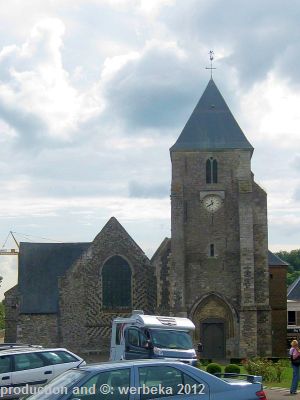 |
When entering the church you find yourself in the Choir Nave. The organ is installed here, consisting of 880 pipes in 13 sets, with two manuals and a pedal. It was installed in 1602, restored in 1754, without any further repairs.
The choir of today was built in 1768. The wooden figure of Christ is from the 15th century, but the cross is of modern times. The altar picture, made by one of Ruben's pupils, shows the "Descent from the Cross". At either side of the painting there is a statue. To the right you see St. Martin (16th century) and to the left a Madonna and Child (17th century).
|
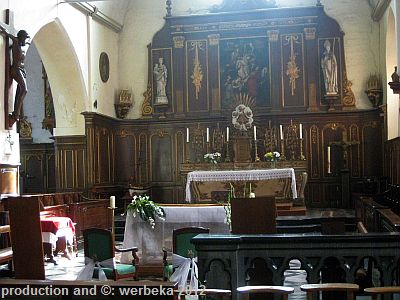 |
Naturally, there are some relics in small, guilded shrines as well. They belong to the Saints Blimond, Firmin and Theodosia respectively. In the Choir Nave there is also a very small chapel, devoted to Saint Joseph and restored in 1874. Today it is used as a remembrance of the local victims of the World Wars (picture below to the left).
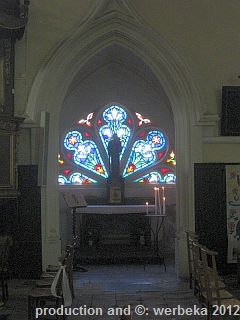 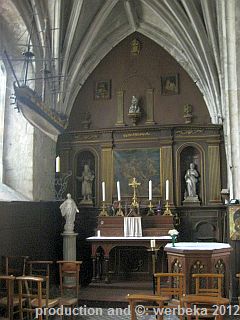
Going out from the other nave, the Virgin Nave, there are three chapels, of larger size. The oldest of them, from the 15th century, is devoted to St. Peter and his brother St. Andrew, as they both were fishermen and the chapel is called the Sailor's Chapel. This is rather to be expected in a fishermen's village. The frigate, hanging from the ceiling, dates back to the 17th century and is named "Louis XIV".
The other chapels are the Chapel of St. Valery and the Chapel of Baptismal Fonts. In the former the altar picture shows the Healing of Saint Blimond by Saint Valery, from the 17th century. Here is also a ship placed, a schooner-model from the early 19th century.
The last chapel, built in 1581, has an altar-painting showing "St. Paul's Martyrdom" and is devoted to St. Agnes.
As mentioned before, the nave, from which the chapels lead away, is called the Virgin Nave, due to the sculpture of the "Virgin and Child" above the altar. Above that statue one finds the city arms. To the left of the altar there is another ship and in front of the choir you find the statue of the "Black Virgin", that dates back to the 16th century. There are four paintings by a Benedictine munk, Dom Boutté painted in 1639. They are hung between the chapels and show episodes of the life of St. Valery.
It is a small village church, but due to its unusual two-naved conception it is well worth a visit. Its interior may be simple in comparison to bigger churches, but it is nevertheless authentic and it fulfilled without doubt the needs and the consolation of a small fishing village.
© Bernhard Kauntz, Wolvertem, Belgium, 2012
|
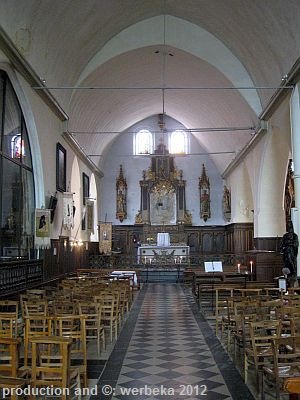 |
Back to  or to the or to the  of of 
last update: 10.11.2012 by webmaster@werbeka.com
|







